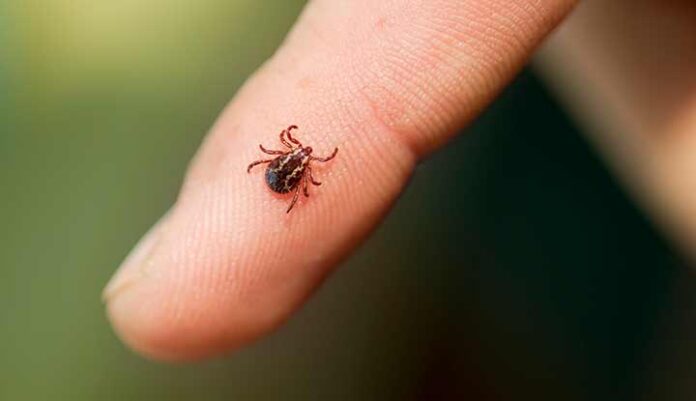Babesiosis
Babesiosis is a parasitic disease caused by protozoan parasites of the genus Babesia. These parasites infect red blood cells, leading to a range of symptoms from mild flu-like signs to severe, life-threatening illness. Often transmitted through tick bites, babesiosis is considered a zoonotic disease, which means it can be transmitted from animals to humans. Although it has been known for decades, babesiosis is gaining increased attention due to its potential for causing significant health issues, particularly in areas where it is endemic.
Etiology and Pathogenesis
Babesiosis is primarily caused by Babesia species, with Babesia microti and Babesia duncani being the most common in the United States. In other parts of the world, different species such as Babesia bovis and Babesia bigemina are prevalent. The life cycle of Babesia involves two hosts: a tick and a vertebrate host. The primary vectors are Ixodes scapularis (black-legged tick or deer tick) in the northeastern and north-central United States, and Ixodes ricinus in Europe.
When a tick feeds on an infected host, it ingests Babesia parasites along with the blood. Inside the tick’s gut, the parasites undergo asexual reproduction and eventually migrate to the salivary glands. When the tick bites another host, it injects the parasites, which then enter the bloodstream and invade red blood cells in the new host.
Once inside red blood cells, the parasites multiply asexually, leading to the destruction of these cells. This destruction contributes to the clinical manifestations of the disease, including anemia and fever. Severe cases can lead to complications such as acute respiratory distress syndrome (ARDS), renal failure, and even death, particularly in immunocompromised individuals.
Clinical Presentation
The clinical presentation of babesiosis can range from asymptomatic to severe. Many people, especially those who are healthy and have robust immune systems, may not show significant symptoms. However, when symptoms do appear, they can vary widely and include:
- Fever and Chills: Often reported as intermittent and can mimic malaria, leading to misdiagnosis.
- Fatigue and Malaise: General feelings of weakness and tiredness are common.
- Headache and Muscle Pain: Similar to flu-like symptoms.
- Anemia: Resulting from the destruction of red blood cells.
- Jaundice: Due to the breakdown of red blood cells and liver involvement.
- Splenomegaly and Hepatomegaly: Enlargement of the spleen and liver may occur in severe cases.
Severe manifestations are more common in individuals with compromised immune systems, the elderly, or those with underlying health conditions. These severe cases may present with additional symptoms such as high fever, hypotension, and signs of organ dysfunction.
Diagnosis
Diagnosing babesiosis can be challenging due to its diverse clinical presentation and similarity to other febrile illnesses. Key diagnostic tools include:
- Microscopic Examination: The most traditional method involves examining blood smears under a microscope to identify Babesia parasites within red blood cells.
- Polymerase Chain Reaction (PCR): This molecular technique detects Babesia DNA in the blood and is more sensitive and specific than microscopy.
- Serologic Tests: These detect antibodies against Babesia and can confirm recent or past infection.
- Blood Culture: In some cases, culture techniques may be used, although they are less common.
Given the overlap with other diseases like malaria, it is crucial for healthcare providers to consider a broad differential diagnosis and use multiple diagnostic methods to confirm babesiosis.
Treatment
Treatment of babesiosis typically involves a combination of antiprotozoal medications and supportive care. The choice of drugs may depend on the severity of the disease and the specific Babesia species involved. Commonly used medications include:
- Atovaquone and Azithromycin: This combination is often used for uncomplicated cases and is effective against many Babesia species.
- Clindamycin and Quinine: For more severe cases, especially when the patient is symptomatic or has a high parasite load, this combination is recommended.
- Exchange Transfusion: In severe cases with high parasitemia or complications, an exchange transfusion may be required to remove infected red blood cells and reduce parasite load.
Supportive care includes managing symptoms such as fever, dehydration, and anemia. In severe cases, patients may require hospitalization and intensive care support.
Prevention
Preventing babesiosis primarily involves reducing tick exposure. Effective preventive measures include:
- Avoiding Tick Habitat: Staying away from areas with dense vegetation and using tick repellents.
- Proper Clothing: Wearing long sleeves and pants when in tick-prone areas and tucking pants into socks.
- Tick Checks: Regularly checking for ticks after outdoor activities and promptly removing any ticks found.
- Tick Removal: Properly removing ticks with fine-tipped tweezers and cleaning the bite area.
In areas where babesiosis is endemic, public health measures and tick control programs can help reduce the incidence of the disease.
Epidemiology and Public Health
Babesiosis is endemic in several parts of the world, including the United States, Europe, and parts of Africa and South America. In the U.S., the disease is primarily found in the northeastern and north-central regions, where the black-legged tick is common. Global travel and changing climate patterns may influence the spread of babesiosis and introduce the disease to new regions.
Public health surveillance and research continue to be important for understanding the epidemiology of babesiosis, tracking its spread, and developing effective prevention and treatment strategies.
Conclusion
Babesiosis is a significant parasitic disease with a range of clinical presentations and potential for severe outcomes. Understanding its transmission, diagnosis, treatment, and prevention is crucial for managing and controlling the disease. With ongoing research and improved public health measures, it is hoped that the impact of babesiosis can be reduced and better managed in affected regions.


































